In The Shadow of the Tree and the Knot of The Earth
Anish Kapoor gives a tour of his new works at London’s Lisson Gallery

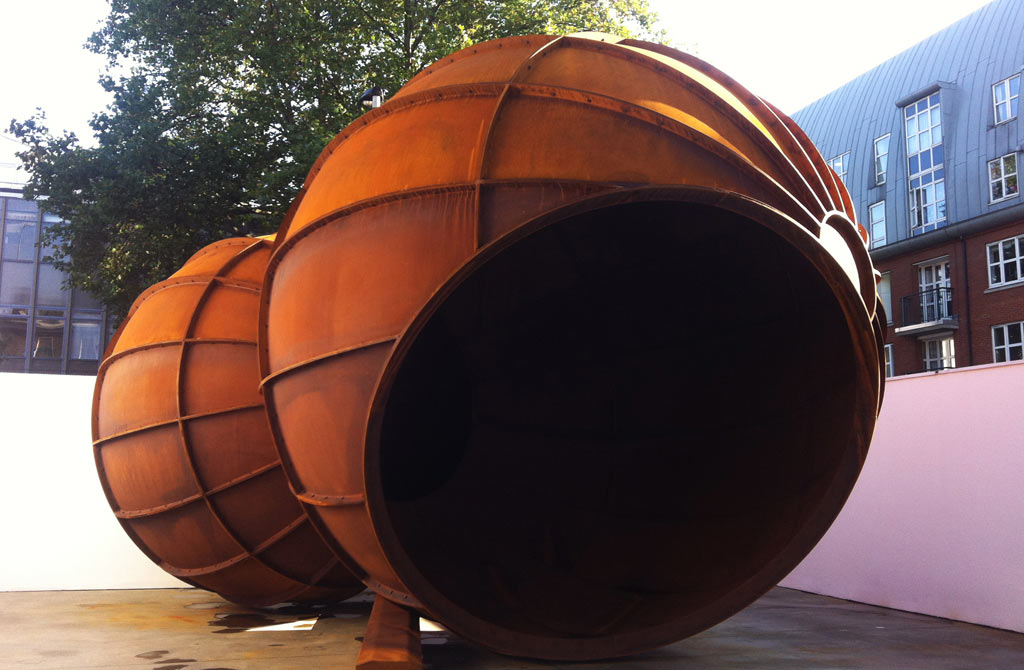
To coincide with London’s Frieze Art Week, Lisson Gallery has opened a major exhibition new of work by one of the UK’s greatest living artists, Anish Kapoor. Just when it seemed that Kapoor had reached the limits of the art world’s highest echelons, perhaps quite literally with the Olympic Arcelor Mittal Orbit, he comes right back down to earth again with a new show, called “In The Shadow of the Tree and the Knot of The Earth.” In a recent tour of the work, Lisson Gallery director Nicholas Logsdail commented on the exhibition, saying, “Anish captures each phase of his work so fully, prompting us to ask ‘Can he go any further?’ But, always, with very perfect timing, he moves on. This is an entire body of new work, which is a remarkable achievement.”
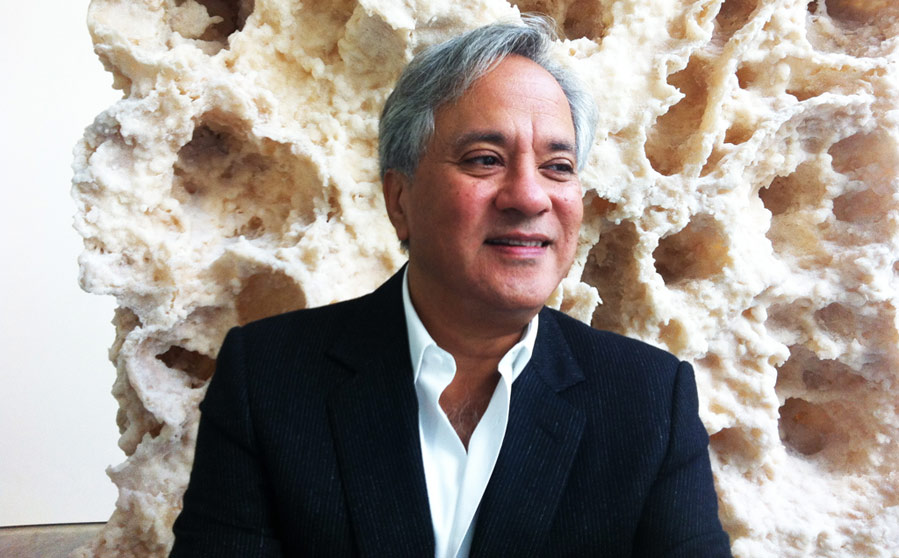
The exhibition is spread across the Lisson Gallery’s two sites, at 29 Bell Street and at 52-54 Bell Street. In this expansive series of paintings and sculptures Kapoor says he is returning to his original obsession, the origin of things. “I’m deeply interested in where things begin,” he said. “What is consciousness and why are we here?”
The show in 52-54 Bell Street starts with a series of what Kapoor describes as “models” titled “In The Shadow of The Tree and The Knot of The Earth.” Kapoor described the forms as “pointing to or looking for places of origin, places with a sense of being and belonging, a protoplace.” These monumental protruding and sinking shapes of”flux and flow” emerge from mounds of earth on the scale of architectural models, which prompts the question of whether they were destined to be built as enormous installations. “These sculptures play with scale,” says Kapoor. “They are big objects and small objects at the same time.” He went on to confirm that there were indeed plans afoot to develop at least one of the models to full scale, but he didn’t indicate which one.
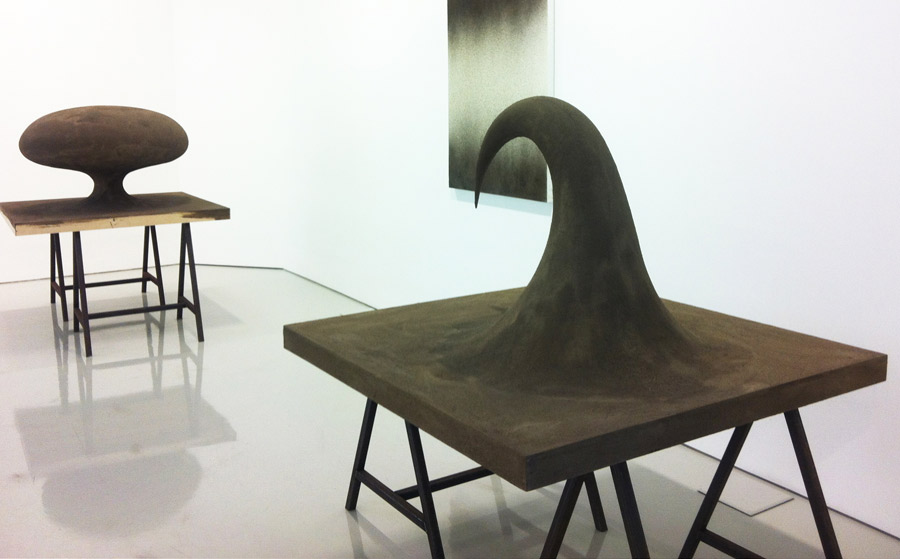
Hung alongside the “protoplace” earth sculptures are a series of paintings, which, for Kapoor, are an experiment to see “if it’s possible to make earth into sky.” The abstract forms on canvas, painted with earth or metals such as copper, iron and bronze, suggest rain, falling earth or even tornadoes that connect sky and earth with twisting whirlwinds. Metal comes back down to earth on a vast scale in the corten steel sculpture outside in the Lisson sculpture yard. Titled “Intersection,” the connected bulbous metal forms are sliced open on one side to reveal a cave and tunnel, perhaps leading to another world, or dimension.
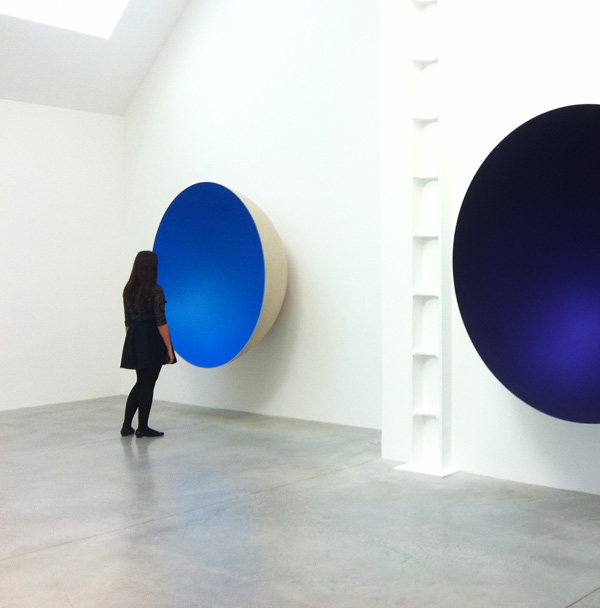
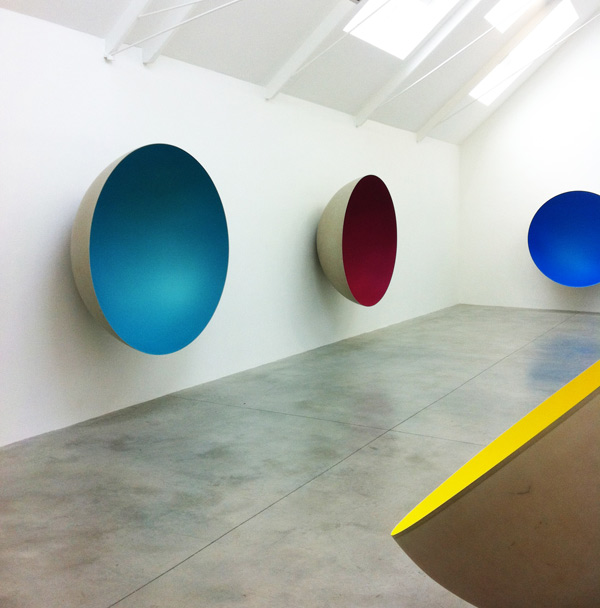
The image of a circle or hole as a portal is repeated in various places throughout the exhibition. At the back of 52-54 Bell Street are a series of intensely colored circular fibreglass sculptures. As you stare into the concave forms your vision is overwhelmed by the intensity of the pigment. “Your consciousness of the color changes,” Kapoor explains. “And it becomes endless space.”
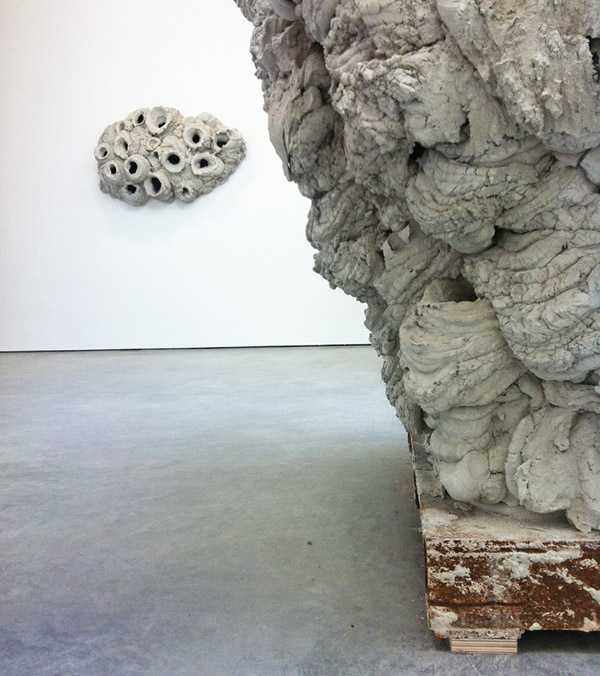
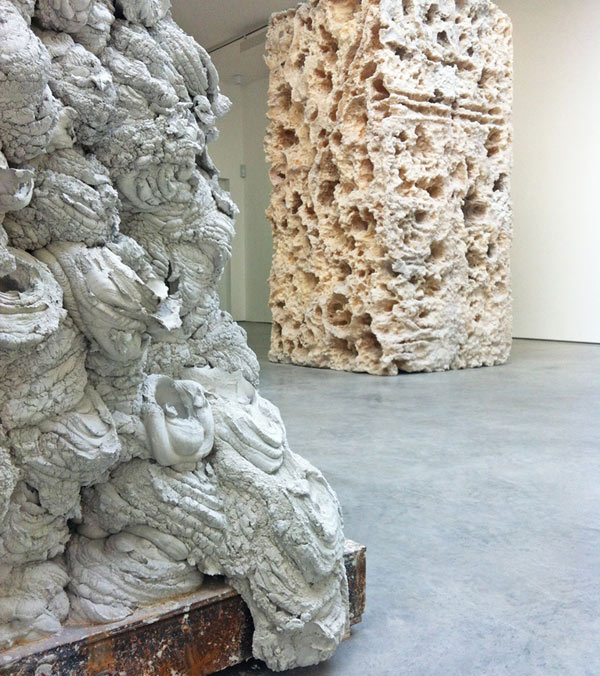
Across the street at 29 Bell Street, the galleries return to monochrome palate, but with a marked emphasis on materiality and texture. A series of cement sculptures, at varying scales, evoke the bubbling and boiling of primeval places where life began. Kapoor finds the idea of the origin of objects has biological, geological and deeply religious connections. One cement sculpture appears to glows inside, its burst openings filled with red paint, suggesting lava flows or even, “Stigmata,” he announces suddenly. “Perhaps, St Sebastian?” Kapoor is interested in the power of auto-suggestion and clearly enjoys delivering soundbite statements about his work. He is keen to point out that the cement sculptures started life being modelled by computers but he rejected that method in favour of a human hand made process. “I have given up on computers,” he boldly states. “I think we can do better than that.”
Returning to his theme of connecting phenomenological and spiritual origins, Kapoor ends his tour with a description of his investigations into the sound frequencies of spiritual places. With autosuggestion in mind, he emphasizes the anxiety inducing effects of his sound sculpture upstairs. The sound waves in the fully insulated room are emanating at a frequency so low that your whole body shakes in the space. The title of the piece is “Haunted.” And it is, indeed, a deeply unsettling experience. With this last fully dematerialized sculpture Kapoor, finally, takes us through the portal into another dimension.
“In The Shadow of the Tree and the Knot of The Earth” opens at Lisson Gallery today, 10 October and runs through 10 November 2012.
Images by Leonora Oppenheim












